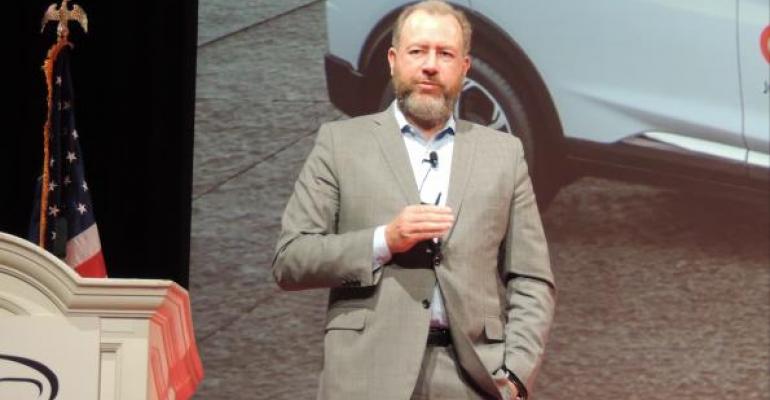LAS VEGAS – A fatal accident involving a self-driving Uber SUV may unnerve people about impending driverless vehicles, but General Motors President Dan Ammann says those cars will make the world a better place.
He mentions the accident in a keynote speech at the American Financial Services Assn.’s Vehicle Finance Conference held in conjunction with the 2018 National Automobile Dealers Assn.’s annual convention here.
But he adds autonomous vehicles, when fully developed, will dramatically reduce vehicle accidents. He says about 40,000 people die in those annually in the U.S., including 6,000 pedestrians.
In what is believed to be the first self-driving-vehicle fatality, an Uber-owned Volvo XC90 SUV struck a woman walking her bicycle across a street in Tempe, AZ. A test driver was behind the wheel. Police say the car didn’t slow down before it hit the 49-year-old pedestrian.
Asked in a meeting with journalists after his speech whether the fatality will shake public faith in autonomous vehicles – which doesn’t rank high in the first place – Ammann says consumer confidence will grow as fully autonomous vehicles show their capabilities. He calls GM a leader in developing such vehicles.
“Our approach is centered on safety and validation,” he says. “And we are in a unique position because we have all the capabilities (to develop a level-5 autonomous vehicle) in one organization. That will build consumer confidence.”
He doesn’t give an exact year in which fully autonomous vehicles will ply the roadways. “It’s important to get the technology to work in the most complex environments. It is 10,000 times harder doing that from an engineering standpoint than equipping a car to do laps by itself around the track.”
He shows the AFSA audience videos of GM semi-autonomous test vehicles navigating the streets of San Francisco. To come is testing on New York City streets. “That should be interesting,” he says.
He adds, “We’re deeply committed to bring autonomous to the world of vehicles. But the technology won’t change the world if we can’t bring it to scale.”
It’s a balancing act for an automaker to focus so intently on future technology while at the same time developing and selling vehicles for today’s market, Ammann says. “You need to be ambidextrous. You are asked, ‘How are sales this month?’ and also ‘When are self-driving cars coming out?’”
Then there’s the GM mission of dealing with “interlopers and disruptors coming into the business with nothing to lose, while we as incumbents have everything to lose.”
He cites the seemingly topsy-turvy world of Wall Street that has put a combined $120 billion market cap on General Motors, Ford and Fiat Chrysler Automobiles – and the same combined amount on Tesla, Uber and Lyft.
Asked if his reaction to that is “That’s the way the world goes around” or “What the heck is that about?” Ammann tells WardsAuto, “Those are your words, not mine.”
He adds the oddly identical market caps “don’t properly reflect our car-business performance, our leadership position or our technology.”





